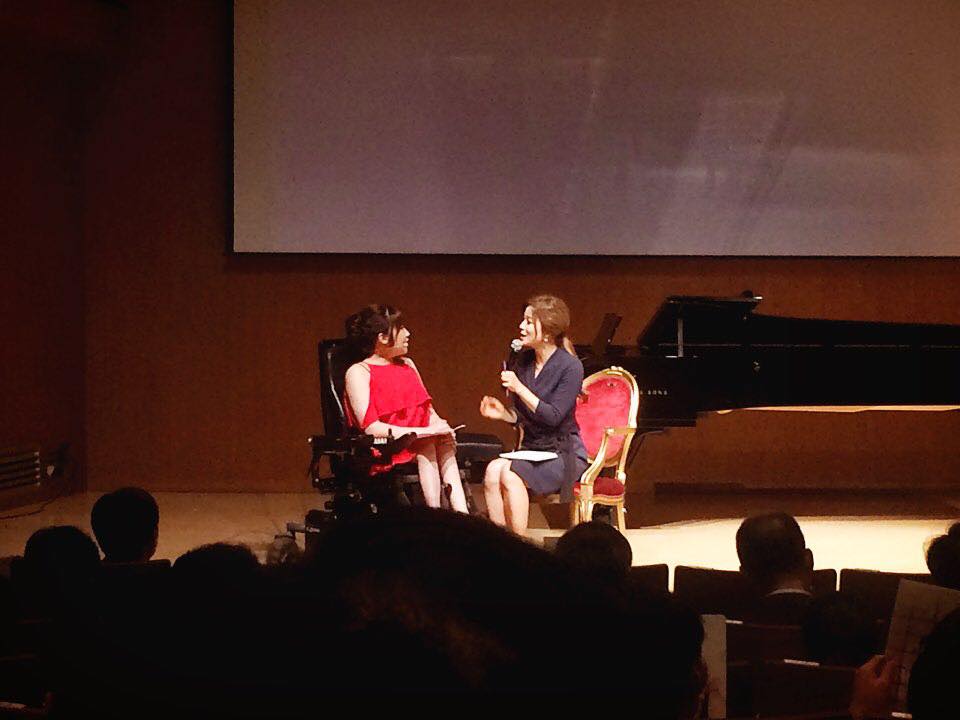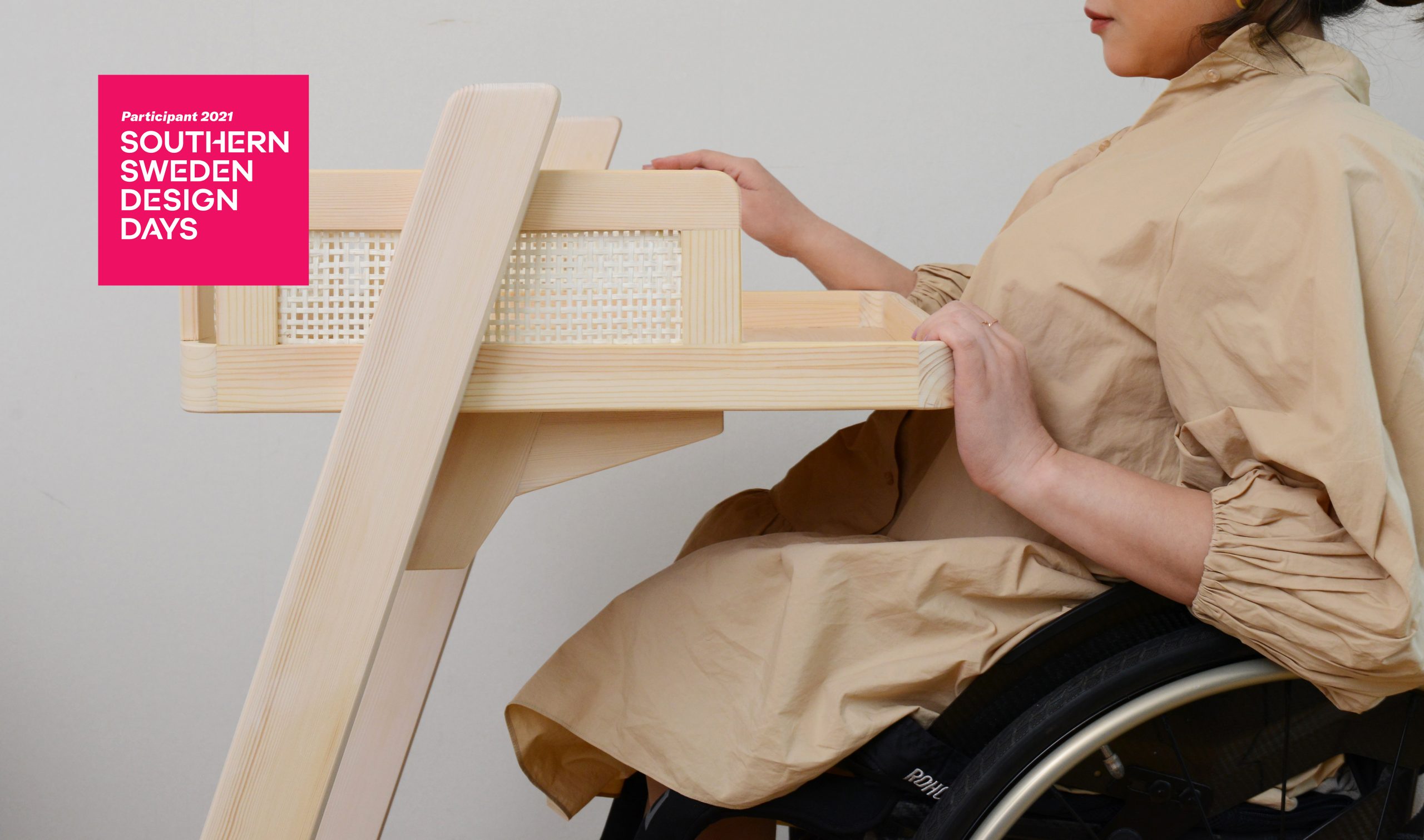Yesol has been invited to public occasions to give a speech, interviews, and lectures both on/offline. Here you can see her recent public activities.
Lectures, Talks,Interviews, Public Media

나는 눈높이가 50cm 낮은 디자이너입니다.
동아일보 2023 7월 기사
기사전문 : https://original.donga.com/2023/techable-ys

Region Skåne Design Prize 2023 Award ceremony
- Date: May 25, 2023
- Location: Southern Sweden Design days 2023 main exhibition hall




Photo: Anders Lindskoug
릴라엘레펀트 ‘정상성’을 질문하다
Little Elephant challenges the norms of society(Lilla Elefant utmanar normerna i samhället)
Region Skåne Design Prize 2023 interview, 2023 May
Full Article to download here: https://usercontent.one/wp/www.yesolkim.com/wp-content/uploads/2023/10/lilla-elefant-skane-design-prize-interview-with-region-skane.pdf


Girls on wheels Talk concert
- 강사 : 김예솔
- 주제 : 나다운 프로젝트 만들기
- 일시 : 2023 4월 16일(수) 01시~5시
- 장소: 서울 헤이그라운드시작점
- 대상 : 누구나
- 방식 : 라이브 스트리밍, 현장 무대
- 보도자료 :
- 멋진 언니들, 그런데 휠체어를 타는https://www.hani.co.kr/arti/opinion/column/1089543.html
- ‘나다운 일’ 하며 힙하게 사는 휠체어 언니들 https://www.socialimpactnews.net/news/articleView.html?idxno=401




장애와 미디어 Disability & Media
- 강사 : 김예솔
- 주제 : Disability & Media
- 장소: 서울대학교 미술대학 디자인학과 49동
- 일시 : 4월 12일 10시~12시



모두를 위한 가구 Furniture for all
- 강사 : 김예솔
- 주제 : Furniture for all
- 장소: National Rehabilitation Center Lab, Seoul, South Korea
- 대상: 국립재활원 임직원들
- 일시 : 4월 11일 12시-1시


장애를 개성으로, 다양한 몸을 위한 북유럽 가구 디자인
서유경의 「내일, 인터뷰」 No.2 릴라 엘리펀트 김예솔 (2부)
기사전문: https://brunch.co.kr/@sayuandpersona/114

다름을 무대 위로, 유니버설 가구 디자이너 김예솔
서유경의 「내일, 인터뷰」 No.2 릴라 엘리펀트 김예솔 (1부)
기사전문 : https://brunch.co.kr/@sayuandpersona/113

인스비 초청 ‘ESG 경영과 장애인 인권’
- 강사 : 김예솔
- 주제 : 사례로 보는 유럽기업의 포용적인 디자인과 마케팅
- 일시 : 6월 29일(수) 19시~21시
- 대상 : ESG 경영에 관심있는 누구나 (선착순 100인)
- 방식 : 유튜브 비공개 운영

SNU BK21 초청강연 “Objectified”
2022년 5월 4일
- 강사: 김예솔 디자이너, Jacob Yoon Nossell
- 장소: Zoom online

- 강사: 서유경 변호사(법률사무소 아티스), 김예솔 디자이너
- 장소: [오프라인] 서울특별시 종로구 윤보선길 65, 2층 (포레스트 구구), Zoom online



Design meets disability
2021.5.27-30
Online Designer’s talk at Southern Sweden Design Days

Text:
Hi, my name is Yesol, an industrial designer based in Sweden. I wanna talk about design and disability, especially, what it means designers take consideration of disabled bodies? and why do we need to think of it?
I had my disability when I was 6 years old. I was a happy kid. My parents and my brother treated me the same as before my disease. But when I grew up in an area that is not very accessible for me, I felt a big gap between me inside the home and another me outside homes such as the school, or community that I was in.
For example, when I was at home, I am a lovely princess’s youngest daughter, but when I went out home, many people looked at me with the eyes of empathy ‘ I am a pitiful little girl who can’t walk. ‘
So I sometimes thought that my body is the problem and I could be a burden in society.
You see, in the disability study, there are two models of disability: The medical model and the social model. The medical model Is the way we typically look at disability for decades. The disabled body is a problem that needs to be fixed. This perspective tells us that she needs a cure so she can fit into our world.
But the social model sees this picture differently. Instead of fixating on disability as the problem, the social model focuses on the experience of disability, the context of disability, the environment creating disabling moments.
The social model says “We need to change our world to fit more people.”
Let’s make a ramp, elevator!
Sadly, It is much less common to see this way. That is why so many disabled communities has been fighting for their own rights against discrimination of society for decades in many countries in the world until now.
the world has been built on for the major group of nondisabled people,
I also experienced this perception, we call, ablism when I started my career in design. Designers created their things beautiful, attractive, and let people’s lives easier. But most of the time the target group is the healthy, ideal body. sometimes they forgot or did not think about the diverse bodies as users and consumers. So the design itself creates exclusion of the disabled body. There are 100 beautiful chairs that have been designed by the greatest designer in history, but few are welcoming me.
it is not all about only me, and people in the same situation.
Ableism affects all of us. Whether we think of ourselves as disabled or not, we are aging, old, we got injured on the limb, as a woman, we experience difficulty to move around as pregnant body.
So everybody has exposed the world built on speed productivity, high proficiency, most favorable image.
Then people will say, but there are designs for disabled people so they can access them. Yes. The design and technology brought up accessibility to disabled people. But I would like to go further more, beyond accessibility When we say accessibility, there is the assumption that disabled people don’t really have the taste. If you need access, the style has not to be taken seriously as the first priority. Always the functionality is the most important. And I should be grateful when it is accessible even if it is ugly and not my style at all. (not visually pleasurable) of course, the functionality is important.
But I am a person who has a taste for colors, styles, shapes, and feelings of objects! I don’t want to sleep in a hospital look bed. I want to make a space that feels like my home sweet home like everybody does. So I can invite people to my place and show my tastes and beloved belongings instead of feeling shame having the fictionally working well hospital bed.
Then what designer can do?
What would happen if we, designers, decided disabled bodies were worth including?
When we include the disabled bodies as a part of the bigger community, all of us benefit.
For example, the sidewalk ramp was made for wheelchair users at the beginning, but it has been good for parents with strollers, bicycles users, and scooters users. And the automatic door opener is useful not only for wheelchair users, but also for parents with strollers, Cart users, and people who carry their grocery bags with two hands.
This is why I want to talk about the importance of having the mindset as a designer that your designed products or visual communication make a difference and it will impact a lot the society and people’s lives.
I invite you all to come to see our exhibition during the southern design days, the theme of the exhibition is “design meets disability.”
It will broaden your perspective about design and different bodies.
Thank you.
